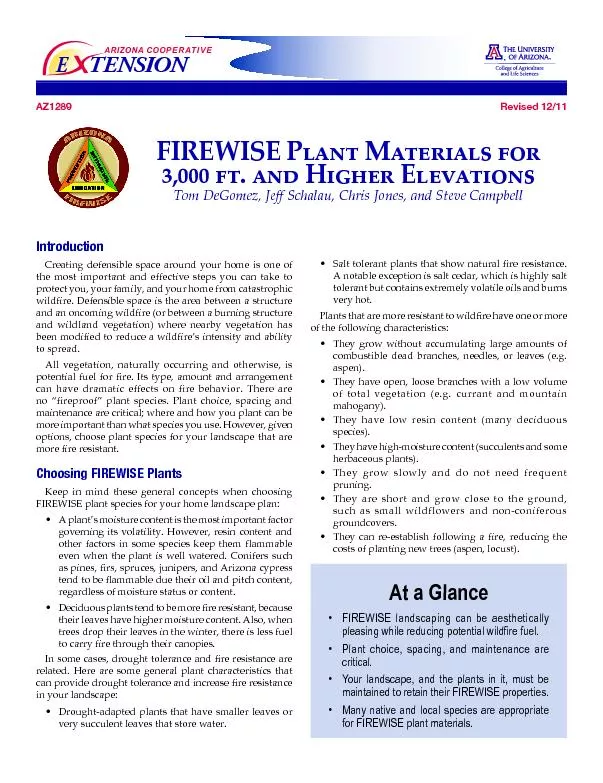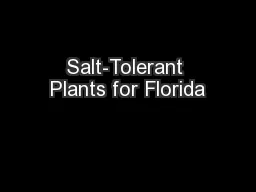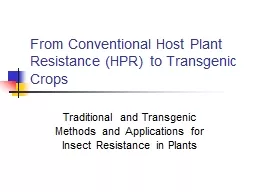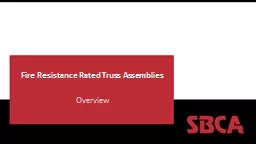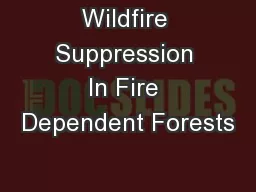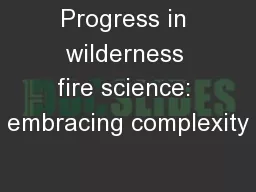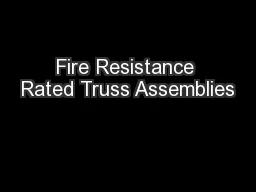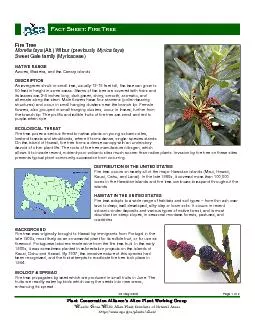PDF-.alt tolerant plants that show natural fire resistance.
Author : liane-varnes | Published Date : 2016-03-20
notable exception is salt cedar which is highly salt tolerant but contains extremely volatile oils and burns very hot lants that are more resistant to wildx00660069re
Presentation Embed Code
Download Presentation
Download Presentation The PPT/PDF document ".alt tolerant plants that show natural f..." is the property of its rightful owner. Permission is granted to download and print the materials on this website for personal, non-commercial use only, and to display it on your personal computer provided you do not modify the materials and that you retain all copyright notices contained in the materials. By downloading content from our website, you accept the terms of this agreement.
.alt tolerant plants that show natural fire resistance.: Transcript
Download Document
Here is the link to download the presentation.
".alt tolerant plants that show natural fire resistance."The content belongs to its owner. You may download and print it for personal use, without modification, and keep all copyright notices. By downloading, you agree to these terms.
Related Documents

